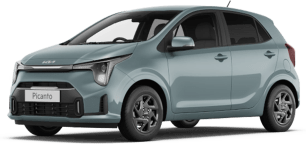You wouldn’t know it in Australia, but BYD has a huge and diverse range of vehicles with lots of different styling approaches in its home market of China.
The cars we get here, though, consisting of this Dolphin hatch, the Atto 3 small SUV, and the upcoming Seal sedan all seem to share more or less the same curvy, futuristic theme.
Contemporary touches on the exterior of the Dolphin include the bar light and full ‘Build Your Dreams’ typeface embedded in the rear, the blocky gloss black alloy wheels (17-inch on the Premium we tested), the two-tone colour scheme, and of course, the grille-free face.
Short overhangs and a tall body seal the EV deal, with the Dolphin looking closest in its aesthetic to something like the Volkswagen ID.3 than anything else on the market. It perhaps won’t be for everyone - it’s a little more experimental than the more conventional look worn by the MG4 - but then, for others this distinctiveness may be a selling point.
The interior look and feel is the biggest surprise. Somehow, the Dolphin, despite being more affordable than its larger Atto 3 sibling, feels a cut above when it comes to its design theme and build quality.
The weirdly organic touches designed to mimic muscle fibres in the Atto 3 have been traded out in favour of something a bit slicker.
I really like the material choices here. The use of neoprene across the lower half of the dash, in the doors, and down the centre of the seats feels a lot less pretentious than the standard synthetic leathers you usually get at this price-point, and there’s an agreeable mix of plastics as well as gloss and matt finishes.
The nods to this car’s name which are present are a bit more toned down and fit with the design in a more subtle way.
The floating door handles, designed to resemble a fin, are a much nicer piece than the weird rotary ones in the Atto 3, and the wavy touches across the top of the dash aren’t too in-your-face and add an element of intrigue. I like it much more than I expected to.
It’s clear this space is designed around the giant multimedia panel, for better or worse. It looks spectacular, it’s nice and sharp, and the software, which looks as though it’s trying to emulate Tesla, does a pretty good job.
It’s quick, sharp, colourful, and has nice large iconography to jab at while you’re on the move, although some of the driving settings are ambiguously labelled and require clicking through to a sub-menu to alter. You’d get used to it, but it isn’t as slick as a Tesla operating system.
It also rotates, because of course it does, although one quirk I found with this is the polarised coating on the screen made it impossible to see when in portrait mode if you were also wearing polarised sunglasses.
Also, Apple CarPlay doesn't work in portrait mode. A gimmick? You decide.
The floating physical rotary controls jutting out below are a also a brilliant little piece of design. On one side you have your gear shifter, and on the other you’ve got your volume control, between them there are core functions, an on/off switch and an auto button for the climate, as well as the hazard light and drive mode controls.
It would be nice to also have a fan speed and temperature toggle, as these functions can only be used through the touchscreen, but there are worse offenders for clumsy climate controls on the market.






